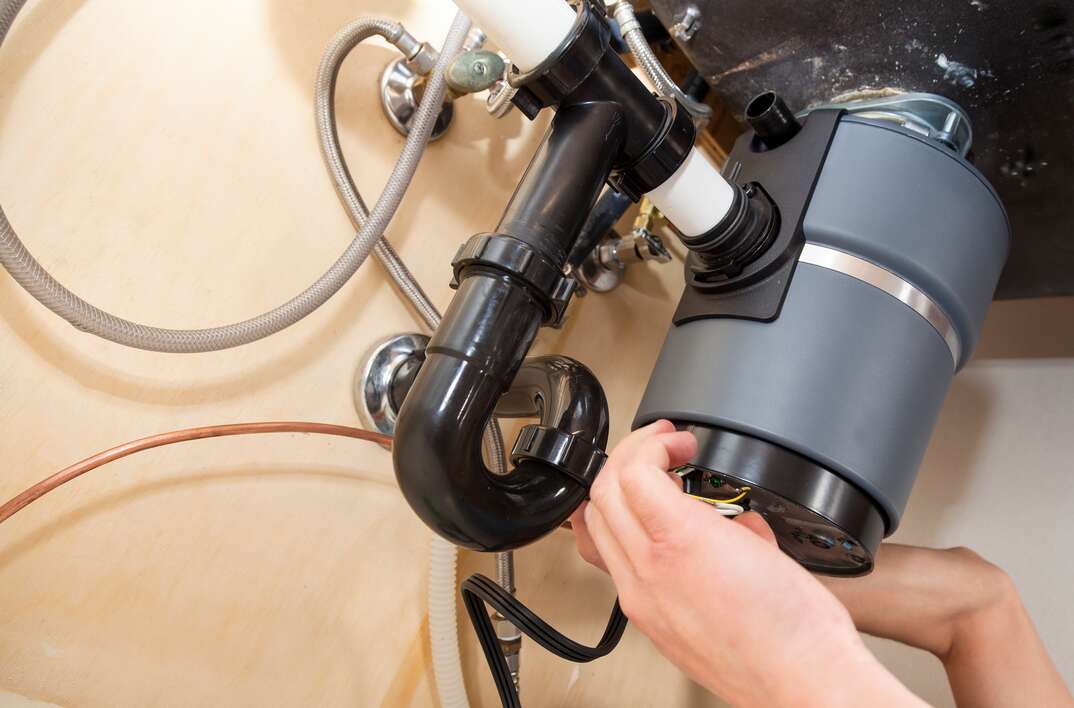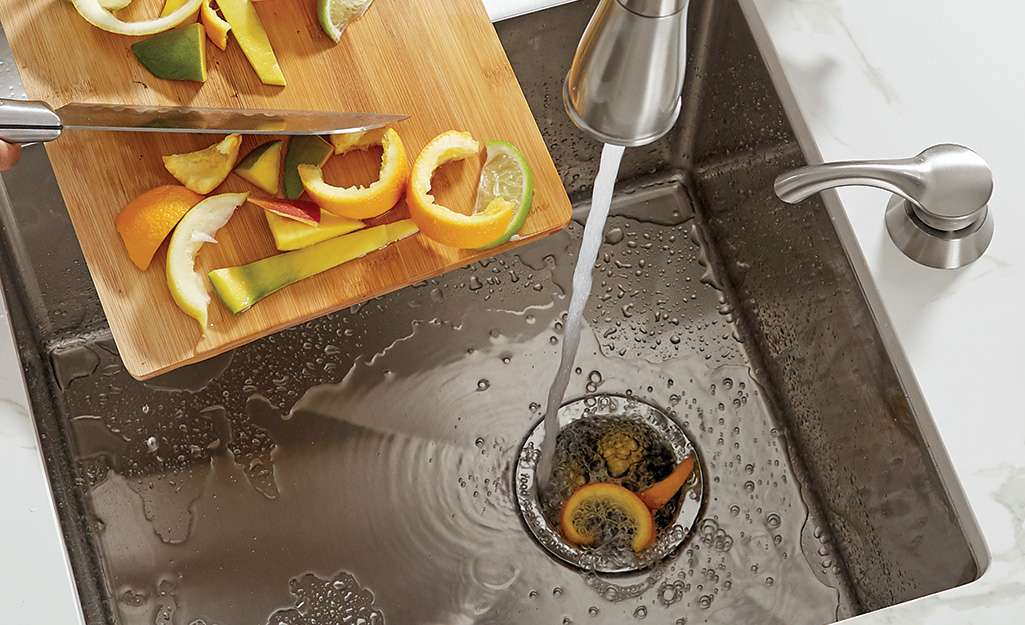Quick Solutions for Fixing a Dripping Waste Disposal Unit
Quick Solutions for Fixing a Dripping Waste Disposal Unit
Blog Article
The content following next about Why Is is exceptionally remarkable. Check it out for your own benefit and figure out what you think of it.

Waste disposal unit are important kitchen area appliances that assist in dealing with food waste effectively. Nevertheless, a dripping waste disposal unit can be a discouraging and untidy issue to take care of. The good news is, several leakages can be taken care of easily with a few simple actions. In this post, we will discuss exactly how to deal with a leaking garbage disposal effectively.
Intro
Waste disposal unit are mounted under kitchen sinks and are designed to shred food waste right into smaller sized items, enabling it to go through the plumbing system easily. While these gadgets are usually trusted, leakages can happen with time as a result of damage, loose links, or damage to the system.
Typical Causes of Leaks in Waste Disposals
Worn Seals and Gaskets
Seals and gaskets play a critical function in stopping water from leaking out of the waste disposal unit. In time, these components can weaken, bring about leakages around the disposal unit.
Loose Connections
The links in between the garbage disposal and the plumbing system can become loosened with time, creating water to leakage out during procedure.
Fractures or Holes in the Disposal Device
Physical damage to the waste disposal unit, such as cracks or holes in the real estate, can also result in leaks.
Recognizing the Source of the Leakage
Before trying to take care of a dripping garbage disposal, it is vital to determine the resource of the leakage. This can typically be done via aesthetic assessment or by conducting straightforward tests.
Visual Examination
Examine the waste disposal unit unit meticulously for any indicators of water leakage. Pay very close attention to locations around seals, gaskets, and link points.
Examining for Leakages
One way to evaluate for leakages is by running water with the disposal device and looking for any noticeable indications of leakage.
Devices and Materials Needed for Dealing With a Dripping Waste Disposal Unit
Prior to starting the repair process, gather the necessary tools and products, including a screwdriver, flexible wrench, plumbing's putty, replacement seals or gaskets, and epoxy or patching material for repairing splits or holes.
Step-by-Step Overview to Repairing a Dripping Garbage Disposal
Turn Off the Power
Prior to attempting any repairs, make certain that the power to the garbage disposal device is shut off to prevent the risk of electric shock.
Find the Leak
Recognize the specific location of the leakage and identify the reason.
Tighten Links
Use a wrench to tighten up any loosened connections in between the disposal unit and the pipes system.
Replace Seals or Gaskets
If the leak results from worn seals or gaskets, get rid of the old elements and replace them with new ones.
Patching Fractures or Holes
For splits or openings in the disposal unit, usage epoxy or an appropriate patching product to secure the damaged location.
Checking the Garbage Disposal After Repair Service
Once the repair is total, test the waste disposal unit by running water through it to make certain that the leakage has been dealt with.
Preventive Maintenance Tips to Stay Clear Of Future Leaks
To stop future leaks, it is important to execute regular maintenance on your garbage disposal. This consists of keeping it clean, preventing placing non-food products or difficult items down the disposal, and occasionally looking for leakages or various other problems.
Conclusion
In conclusion, taking care of a dripping garbage disposal is a fairly simple procedure that can be completed with basic tools and materials. By following the actions outlined in this post and practicing preventive upkeep, you can keep your garbage disposal in good working condition and prevent costly repairs in the future.
HERE’S HOW TO FIX YOUR GARBAGE DISPOSAL
WHAT TO DO IF SOMETHING IS STUCK IN YOUR GARBAGE DISPOSAL
If the impeller won’t turn, there’s probably something stuck in the disposal. It could be a steak bone or peach pit, although plumbers report pulling all sorts of inappropriate objects out of disposals, such as bottle caps or aluminum foil. Make sure power to the disposal is off, and look inside to see if you can see the source of the jam.
Never stick your fingers in a disposal. Pull out anything you see with tongs or pliers.
If the disposal still won’t work, it may be time to call a plumber or consider buying a new disposal. GEM Plumbing & Heating is here for all of your garbage disposal needs.
WHAT TO DO IF YOUR GARBAGE DISPOSAL DRAIN IS CLOGGED
Take everything out from underneath your sink and put a bucket or other container under your disposal to catch any water that drains out. Disconnect your disposal from the power supply. If it’s plugged into a wall outlet, unplug it. If it’s hardwired into an electrical box, go to the electrical panel and turn off the breaker for the disposal. Pour ¼ cup of baking soda into the drain, followed by ½ cup of white vinegar. Give the solution a few minutes to fizz and do its work. Look into the disposal with a flashlight to see if you can see an object that might be causing the clog. If you see it, remove it using tongs or pliers. MORE TIPS ON DEALING WITH A CLOGGED GARBAGE DISPOSAL
Never use drain cleaner in a garbage disposal. It can damage the plastic parts inside the disposal. You can also be splashed with the caustic liquid while working to clear the clog. Beware! Never stick your fingers into a garbage disposal. Trust us — not a good idea. In many instances, your dishwasher drains through your garbage disposal. This allows the disposal to grind any large food particles that may be drained out of your dishwasher. There are some jurisdictions, however, where the plumbing code prohibits such a connection. WHAT TO DO WHEN YOUR DISHWASHER DRAINS THROUGH THE DISPOSAL
Run some water in the sink so your plunger has at least a ½-inch of water to create a seal and plunge vigorously up and down several times. You may need to repeat this several times. Run hot water down the drain to clear any residue that remains.

Do you like reading up on Why Is ? Try leaving feedback down the page. We will be delighted to hear your thinking about this blog posting. We hope that you visit us again before long. In case you enjoyed reading our blog post kindly do not forget to share it. We value reading our article about The Handy Guide To Fixing Your Garbage Disposal Leaking.
Book Appointment Report this page